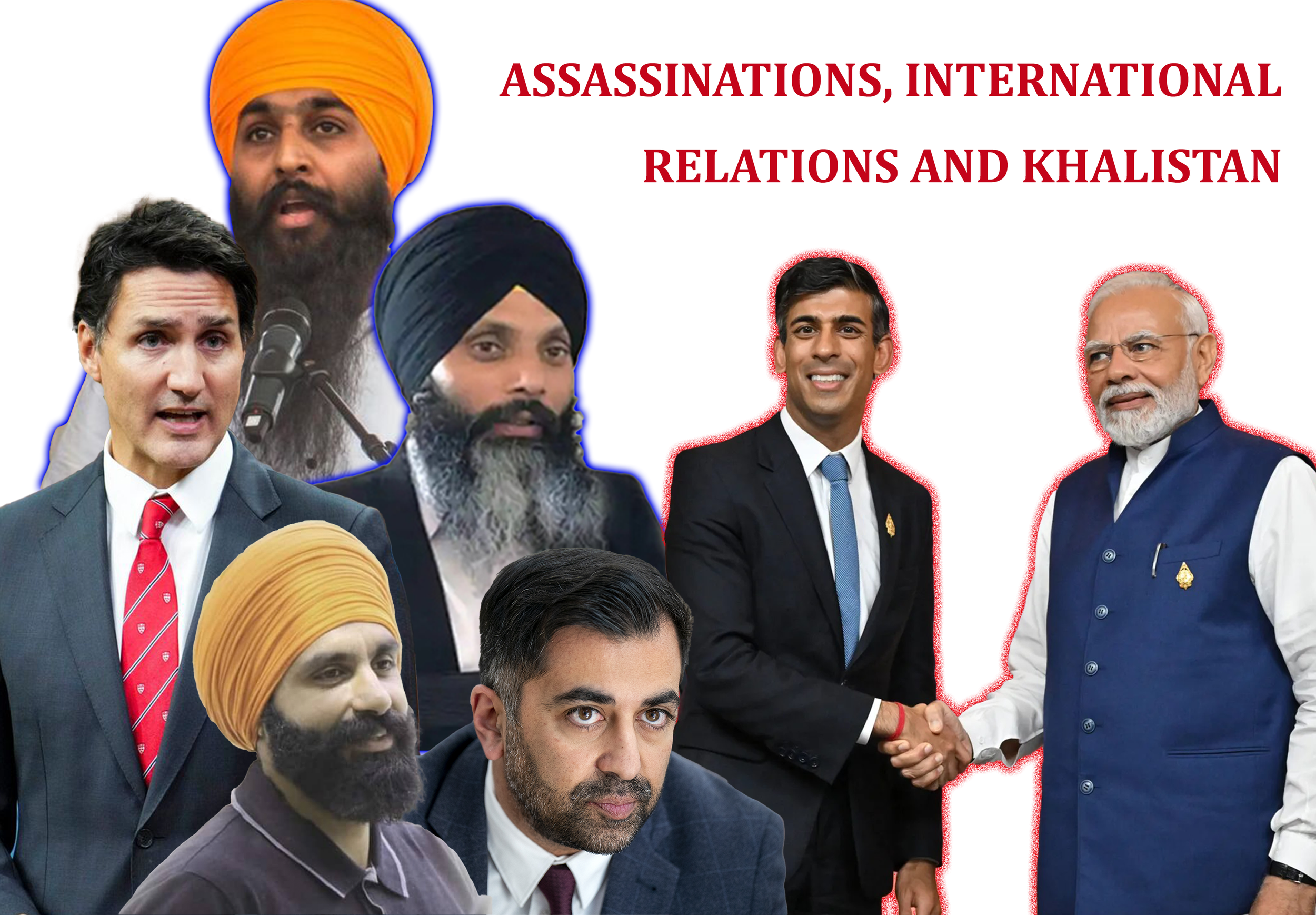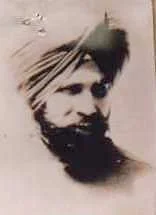Sahib Sri Guru Nanak Dev ji Maharaj: Deen Duni Sache Paatshah
/(Image courtesy of SikhiArt.com)
As Sikhs marked Guru Nanak Dev Ji’s 550th Prakash Purab last month, many took to social media with congratulatory posts; uploading a variety of pictures, including paintings, digital work, memes and photos of cakes big enough to feed an entire village in Panjab. Notwithstanding the misappropriation of Gurbani, one common theme throughout the majority of posts was that Guru Nanak was an advocate of peace and harmony, with zero reference to the Guru’s political mobilisation that not only challenged oppressive power structures across South Asia, but created a movement so powerful it transformed the regions socio-political landscape forever.
It was highly frustrating to read stand-alone statements such as “Guru Nanak loved peace” or “Sikhs are a peace-loving people” not least because such statements are unoriginal, clichéd, and at best manufactured for appeasement. I’d argue that striving for peace is what any sane individual does, irrespective of faith, colour or creed. These statements are indicative of a yearning to be accepted as equal amongst others, in a world which otherwise may not be as accepting as we’d like to think. They’re partial truths, which said alone, dilute the revolutionary mindset of a Sikh. This is dangerous because in both mainstream media and “democratic” political discourse today, striving for peace is constantly synonymised with pacifism.
This in turn supports the notion that any pursuit of justice, rights and freedom should first be made through the established courts or by petitioning systems of government, who are in fact responsible for gross injustice. Guru Nanak did not advocate this type of activism. He didn’t petition the Mughal Courts and neither did successive Guru Sahibans. Where the Guru spoke about equality, liberty and recognising all of humanity as one, he openly criticised those in positions of power for sustaining the inequality.
Vested by the power of Dhur Ki Bani, Guru Nanak as the True Sovereign, directly challenged Babur, the head of the Mughal Empire, for his genocidal campaigns in the 16th century. Guru Nanak provides a detailed account of this at Angs 360, 417 and 722 of the Guru Granth Sahib. Sikh history records that Guru Nanak was imprisoned by Babur for his dissent, thus becoming the first ever Sikh political prisoner. This event occurred during the Guru’s fourth world tour, known as Udassi, which saw the Guru travel far and wide across continents. Upon completion of their fourth Udassi, Guru Nanak returned to Kartarpur in Panjab and laid the foundations of sovereign structures of political power, which successive Gurus built on.
This aspect of the Guru’s life is perhaps the single largest indicator of the importance Guru Sahib placed on being politically active. In fact, it went beyond political activism, Guru Nanak initiated a radical movement that was responsible for creating Naam-conscious beings willing to sacrifice their all to establish an egalitarian society built on Gurmat-inspired principles of equality, liberty and freedom for all of human kind.
Rattan Singh Bhangoo, renowned Sikh scholar of the early 19th century, refers to Guru Nanak as Deen Duni Sache Paatshah; true sovereign of the meek, and the whole world. This was how he described Guru Nanak to British colonisers who had made inquiries about the origins of the Sikh movement. When one reads Bhangoo’s work, and other primary source materials such as Bhai Gurdas ji’s Vaaran, one begins to understand the magnitude of what Guru Nanak initiated from Kartarpur with the creation of Guru Ki Sangat.
Taking inspiration from what Guru Nanak established in Kartarpur, further towns and cities were established by the Gurus, on Gurmat principles of socio-political governance. Guru Angad founded Khadur Sahib, which was soon followed with Govindwal by Guru Amar Das, who also introduced the Manjhi System to spread Sikhi. Guru Ram Das continued this tradition by founding the city of Amritsar and evolving the Manjhi System into the Masand System, a network of Sikh officials charged with the responsibility of collecting funds to help sustain the Sikh movement. Guru Arjan, the 5th light of Guru Nanak, is known for compiling the Adi Granth and contributing the most Shabads recorded in Sikh scripture, but did you know they were also trading in weapons and horses in foreign lands? A clear indication of the Guru’s political aspirations for the Sikh movement.
Staying with the Guruship period, the armed movement initiated by the 6th light of Guru Nanak, MiriPiri de Malik [note how MiriPiri is but a synonym for Deen Duni] Guru Hargobind Sahib, was only possible because it was rooted in ideology propagated and sustained by his predecessors, who all sat on the throne of Deen Duni Sache Paatshah. We then see a continuation of the Sikh mission in which the Guru Sahibans establish further towns and cities, levy taxes for sustaining a state within a state and raise armies from the downtrodden members of society, leading up to the creation of the Khalsa Panth in 1699.
The Khalsa were bestowed with the right to exercise the Guru’s Paatshahi which powered the Republic under Banda Singh Bahadur in 1710; the Misl Confederacy of the late 18th century; Sikh Raj in the 19th century; and every agitation to establish sovereign Sikh rule since. None of those accomplishments were achieved through pacifism or petitioning the imperial courts of the mughal empire. Likewise, the movement to remove British occupiers from annexed-Panjab were spearheaded by Sikhs through directly confronting colonisers and martyrdom.
Sikh tradition holds that it is righteous to raise an armed movement in the fight to establish Sikh sovereignty and remove oppressive forces. This has been the way since the times of the Gurus, and continued throughout the last four centuries. As Naam-conscious beings, Sikhs are enthused with love and compassion for all of humanity and cannot bear witness to the mistreatment of any individual, let alone their own people. It is from this perspective that we recognise and understand the necessity of armed struggle to confront any condition of dehumanisation.
In the Sikh Panth, the use of arms therefore has been a necessary tool in the fight for liberation from oppressive forces. That is why, when individuals today make such one-sided statements that limit the Guru’s life to just peaceful action, at a time when such action is likened to pacifism and non-violent agitations, they erase the significance of Sikh political action, which only serves to strengthen anti-Sikh proponents already working to dilute Gurmat-inspired sovereign Sikh mobilisation. One can only conclude therefore that such remarks are made by the misinformed who have not yet looked beyond the coloniser’s construction of “Sikhism” because the greatness of Guru Nanak’s gift to the world lies beyond the limits of that foreign concept which is white-washed in the peroxide of religiosity.
There exists a whole different paradigm in which Sikhs contemplate the profound knowledge imparted by the Guru; knowledge which liberated entire land masses from the hypocrisy, falsehood and idolatry that was propagated for centuries. The Guru’s Giaan is what provides a deep understanding of self and the nature of existence, and those who attune their consciousness to its frequency, are naturally empowered to oppose ego-fueled rulers that seek to subjugate the masses for personal gain. It would appear that that world is difficult for many to see; some completely oblivious to its existence and others only fortunate enough to know of it as a distant realm. But for the Gurmukhs it’s a reality they live and breathe every day in the presence of their Guru, always ready to wage the righteous battle by any means necessary.
In an age of instant information, a 280-character tweet is a dangerous proposition because it carries the lure of instant gratification, with little to no room of actually upholding the truth. But representing the completeness of Gurmat is perhaps as important now as it has ever been and we must recognise the responsibility of challenging those wrong notions of “Sikhism” in which facets of pacifism are implied to be defining aspects of Guru Nanak and their movement.
To only see Guru Nanak through the coloniser’s eyes is a false sight. To only comprehend Guru Nanak through the coloniser’s pen is a false understanding. Falsehood begets falsehood in that downward spiral of ignorance. Go beyond the constraints of that false imposition and liberate your understanding of the Guru’s life. When you connect to the unconquerable, undying and unblemished movement that has been forged with the sacrifices of the Gurus and Sikh Shaheeds, you’ll understand Sikh history and ideology within the framework of Gurmat, and the true magnificence of Guru Nanak’s path will enlighten your world to new possibilities.





